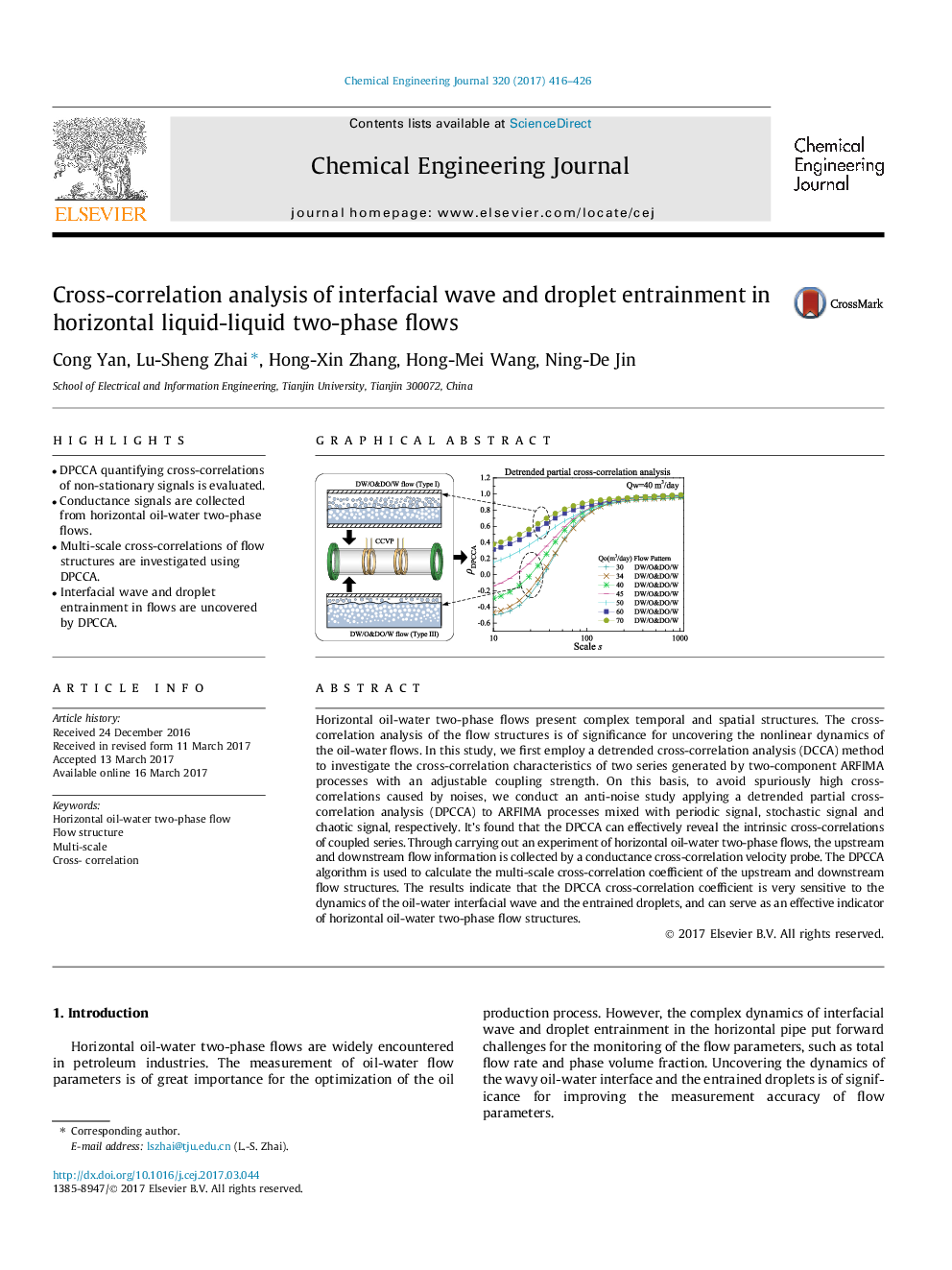| Article ID | Journal | Published Year | Pages | File Type |
|---|---|---|---|---|
| 6466000 | Chemical Engineering Journal | 2017 | 11 Pages |
â¢DPCCA quantifying cross-correlations of non-stationary signals is evaluated.â¢Conductance signals are collected from horizontal oil-water two-phase flows.â¢Multi-scale cross-correlations of flow structures are investigated using DPCCA.â¢Interfacial wave and droplet entrainment in flows are uncovered by DPCCA.
Horizontal oil-water two-phase flows present complex temporal and spatial structures. The cross-correlation analysis of the flow structures is of significance for uncovering the nonlinear dynamics of the oil-water flows. In this study, we first employ a detrended cross-correlation analysis (DCCA) method to investigate the cross-correlation characteristics of two series generated by two-component ARFIMA processes with an adjustable coupling strength. On this basis, to avoid spuriously high cross-correlations caused by noises, we conduct an anti-noise study applying a detrended partial cross-correlation analysis (DPCCA) to ARFIMA processes mixed with periodic signal, stochastic signal and chaotic signal, respectively. It's found that the DPCCA can effectively reveal the intrinsic cross-correlations of coupled series. Through carrying out an experiment of horizontal oil-water two-phase flows, the upstream and downstream flow information is collected by a conductance cross-correlation velocity probe. The DPCCA algorithm is used to calculate the multi-scale cross-correlation coefficient of the upstream and downstream flow structures. The results indicate that the DPCCA cross-correlation coefficient is very sensitive to the dynamics of the oil-water interfacial wave and the entrained droplets, and can serve as an effective indicator of horizontal oil-water two-phase flow structures.
Graphical abstractDownload high-res image (255KB)Download full-size image
